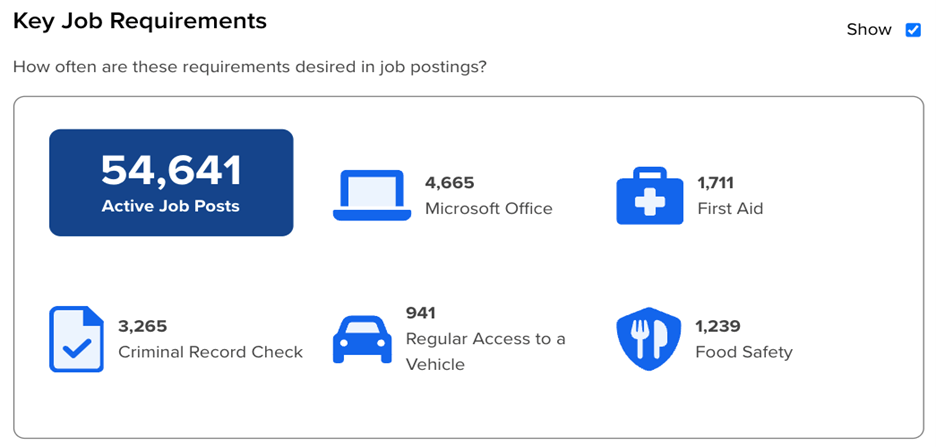Jobs Decline Led by Retail and Construction
Toronto’s unemployment rate continued to trend higher in August reaching 8.8 per cent. Our unemployment rate compares unfavourably to the national average of 6.6 percent. Indeed, across Canada, only Windsor and Edmonton had higher unemployment rates than Toronto.
Job declines were most noticeable in retail, business services and construction. Particularly worrying are the ongoing declines in construction sector. Over the past 12 months, Toronto’s construction sector has lost over 36,000 jobs. Given the slowdown of building and construction permits being issued, a rebound may be months away, although the recent interest rate cut could spur activity.
On the positive side, both the Hospitality Sector (+8,000) and the Scientific and Technical Sector (+5000) added a substation number of jobs during August. Finance and Insurance also had positive gains. Furthermore, average Toronto hourly wages increased by over 80 cents in August to $39.07.
The number of job postings (as indicated in JobsTO) also suggests a current sluggish job picture. The number of unique monthlyy job postings declined by 8,000 posts from July. The largest declines were seen in the retail and administrative sectors, while only the transportation and warehousing sector saw meaningful gains.
In terms of individual occupations, the five hardest to fill jobs last month were:
- Auditors, Accountants and Investment Professionals
- Nursing and Allied Health Professionals
- Managers in Financial and Business Services
- Office Administrative Assistants – General, Legal and Medical
- Food Support Occupations
Educational Requirements
Almost half of all job posts (asking for education requirements) wanted someone with a Univesity Degree followed by a High School diploma.
Key job requirements (aside from education) are led by a knowledge of MS Office followed by a Criminal Record check.

In August, the LFS included additional questions about the extent to which workers were satisfied with their pay and felt that they were paid appropriately, considering their efforts and achievements. The results show that the majority of employees aged 15 to 69 either strongly agreed (22.8%) or somewhat agreed (39.8%) that they were paid appropriately in their job.
Finally, it was a bad summer for students for work. on average from May to August 2024, the unemployment rate for returning students aged 15 to 24 was 16.7%, up from 12.9% in 2023. The unemployment rate for the summer of 2024 was the highest since 2012 (when it was 17.6%), excluding the summer of 2020.
Other Labour News
RBC Thought Paper: Recent analysis from RBC Thought Leadership highlights a shrinking return on investment in post-secondary education in Canada, particularly from 2017 to 2022. However, this period coincides with the COVID-19 pandemic, which disrupted income growth across many sectors, including those traditionally lucrative for graduates. Despite these challenges, the correlation between education and income remains robust. According to the latest census data university graduates earn substantially more than those without post-secondary credentials, reinforcing the long-term value of investing in education.
Recent caps on tuition hikes in several provinces, particularly in Ontario, where a 10% reduction and freeze were implemented, may provide relief and boost future returns on education. Furthermore, as the economy stabilizes and adjusts post-pandemic, the benefits of a post-secondary degree are likely to strengthen, proving that investing in education is still a smart move for long-term income grow. The temporary setbacks observed during the pandemic should not overshadow the enduring benefits of education in enhancing lifetime earning potential.
Canadian labour force: What will happen once baby boomers retire? Last month Statistics Canada published an important paper on the impacts of Canada’s aging workforce Canadian labour force: What will happen once baby boomers retire? (statcan.gc.ca). The paper finds that the overall labour force participation rate has fallen slightly since the early 2000s. This trend should continue until the 2030s, when the last cohort of baby boomers turns 65. The labour force participation rate will then stabilize at around 65%, at least until 2041. Like the total Canadian population, the labour force has aged over the past decades. Projections suggest that, regardless of future immigration levels, the aging of the labour force will stabilize once the baby boom generation has retired. An increase in the participation rates by age, including among older workers, could have a significant impact on the size of the labour force in coming years and on the overall participation rate. Therefore, retaining older workers—particularly those older than 55 years of age—in the labour market seems to be an important factor in sustaining the growth and demographic weight of the Canadian labour force in the future.